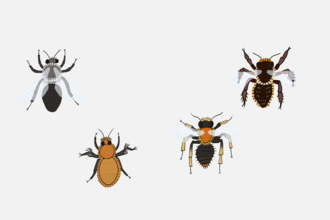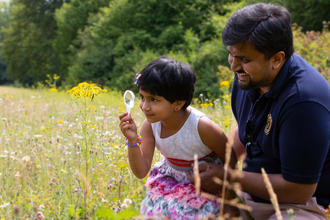
Ruby-tailed Wasp ©Skol-louarn
Ruby-tailed wasp
If seen up close, the glittering Ruby-tailed wasp is, perhaps, one of the UK's most beautiful insects. A solitary wasp, it can be found in sandy and rocky habitats like quarries, outcrops and walls.
Scientific name
Chrysis ignita agg.When to see
April to SeptemberSpecies information
Category
Statistics
Length: 1.1cmConservation status
Common.



